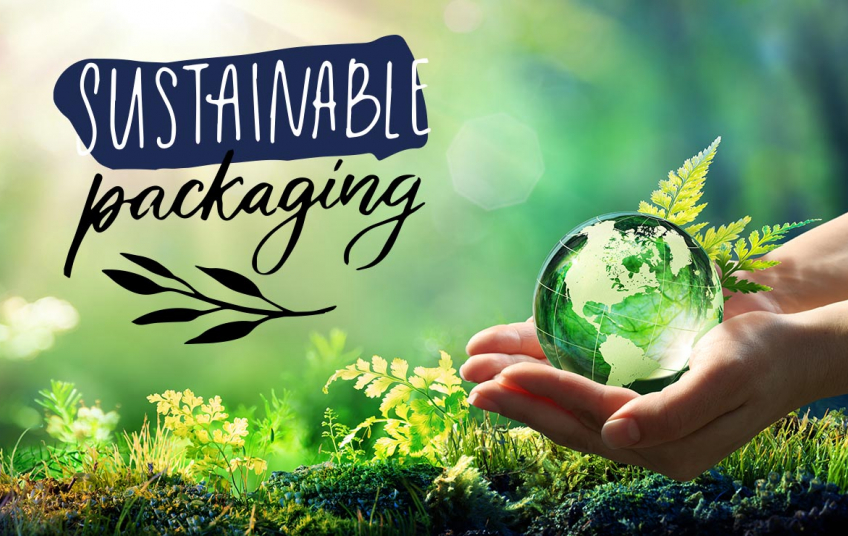In today’s world, packaging is a big part of everything that is manufactured from food to electronics. Packaging makes food safe, reliable, clean, and shelf-stable . For non-food items, packaging makes them safe for travel, easy to manage, and gives the products a better overall appearance. Unfortunately, most of these packages are designed for one-time use. This creates the problem of where the packages’ waste ends up. Based on the Environmental Protection Agency (EPA), about half of all municipal solid waste is created by food packaging material, and as of now, 91% of packaging waste is sent to landfills and/or in the environment. These packaging materials consist of glass, aluminum, paper/paperboard, and plastic. The creation of these materials has its own cost from using a lot of resources such as water, chemicals, wood, minerals, energy, and petroleum. The materials that are used to produce packages, and the waste that comes from packages after they are used have taken a toll on the environment. Due to this, the packaging industry has taken various steps towards more eco-friendly procedures, and these should be continued to be used as they are a necessity to improve our ecosystem.
The materials listed above each have a negative impact on the environment. The manufacturing of glass starts with the melting of sand, soda ash, and limestone at a very high temperature. This process of manufacturing glass dates to around 3500 BC, it's believed that this was when glass was first manufactured in Egypt and Mesopotamia. The most significant effect on the environment that is done while producing glass is the emission of CO2. The emission of CO2 occurs when the combustion of natural gas/fuel and the decomposition of the raw material are melted down. The glass making process also results in water pollution, which is caused by water being used to cool down the material.
The production of aluminium is also harmful to the environment. The production of aluminium can be completed in two steps. The first step is the Bayer Process of refining the bauxite ore, which is done to obtain aluminium oxide. The second step is the Hall Herold process, which consists of smelting the aluminium oxide to obtain pure aluminium. The negative effects of the production of aluminium are the emission of greenhouse gases, polycyclic hydrocarbons, wastewater, and sulfur dioxide.
Lastly, is the production of paper/paperboard and plastic. The manufacturing of paper/paperboard consists of using virgin fiber or recycled paper and grounding them into pulp. The pulp is converted into a big sheet of paper, which is then formed into a web-like form and taken through a machine that uses a stamp to form the paper. Other materials that are used to make paper are cotton linen, hemp, and straw . This process creates a large amount of toxic water as well as air pollution from carbon monoxide, sulfur dioxide, nitrogen oxide, volatile organic compounds, and particles . Plastic production starts with raw materials such as natural gas, oil, or plants, which are refined into ethane and propane. Then they are converted into monomers known as ethylene and propylene by a process called cracking, which is the heating of ethane and propane. The ethylene and propylene are then combined with a catalyst which creates a polymer named fluff. This fluff takes the form of a solid-like powder laundry detergent. Once this step is completed, the polymer is put into an extruder where it is melted and deed into a pipe. This pipe later turns into a tube, which is cut into pallets that are sent to the factory where bottled water is created as well as food packaging and auto parts. Plastics are one of the most common packing materials used all over the world and it is responsible for most of the greenhouse gas emissions such as nitrous oxides, hydrofluorocarbons, perfluorocarbons, and sulfur hexafluoride.
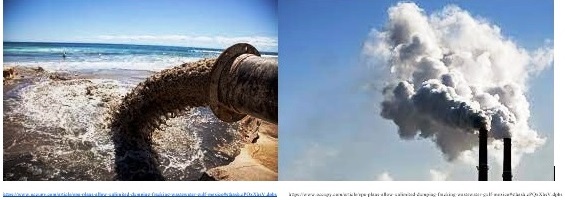
The problem is not only about the process of making packaging, but also about how packaging is disposed of. Most people do not think about this since it is just thrown away, but it is not that simple. In the U.S., there are over 3,000 active landfills and 10,000 closed landfills . There are several types of landfills such as municipal solid waste, bioreactor, and industrial landfills. Municipal solid waste landfills are designed for household waste. Bioreactor landfills are designed to rapidly transform and degrade organic waste. Industrial waste landfills are designed to collect commercial and institutional waste, and are an enormous portion of solid waste, even in small cities. As of today, 96% of packaging waste ends up in one of these landfills. These landfills must comply with federal regulations, which is why they are well located and designed. Some regulations consist of suitable geological areas away from faults, wetlands, flood plains, and restricted areas. Other regulation consists of composite liners, which include a flexible membrane that overlays 2 feet of clay that must be located on the bottom and sides of the landfill to protect groundwater and underlying soil from leachate releases. Another regulation is that waste must be buried or covered frequently by several inches of soil. The purpose of covering the waste frequently is to reduce the odor, litter, rodents, and to protect public health.
The huge amounts of waste that we are disposing of, and the growing number of landfills have been harmful to the environment. The most worrisome concern when it comes to landfills is the gases that are released from them. Gasses such as carbon dioxide, water vapor, and traces of others such as nitrogen and oxygen are all released from landfills. Climate change has been largely attributed to the release of these gasses. Most importantly, the greenhouse gas methane is largely released from landfills. This is a huge contributor to climate change because methane is 84 times more effective at absorbing the sun’s heat than carbon dioxide, making it one of the most potent greenhouse gases in the environment . Even though regulations require landfills to have plastic or clay lining, these liners tend to leak. Leakage results in leachate, which is a liquid that contaminates nearby water sources. Leachate contains high levels of ammonia, which makes the ecosystems lack oxygen due to the increased growth of plain life near water sources. Eutrophication, or lack of oxygen, creates “dead zones” where animals cannot survive . Leachate has many toxic chemicals, which can impact people all over the world because they are contaminating water sources.
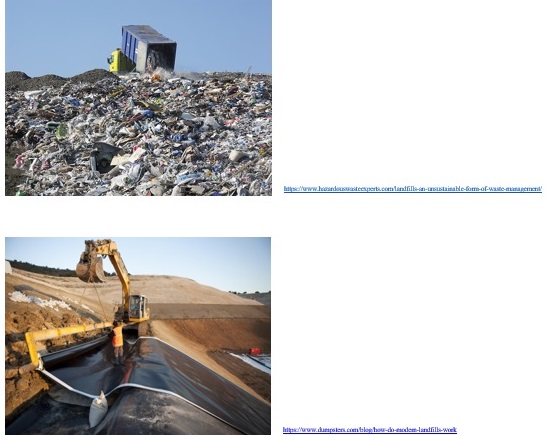
Unfortunately, landfills were not designed to break down waste, but only to store it. Waste in landfills do decompose, but different materials take different amounts of time. Plastic forms more than 50% of packaging waste and approximately 1.6 million barrels of oil just to produce plastic bottled water. Compared to other waste, plastic takes the longest time to decompose. On average, plastic bags take about 10 to 20 years to decompose, while plastic bottles take about 450 years. Aluminium is another material that is used a lot in the packaging industry. On average, aluminium cans take around 80 to 200 years to fully decompose in a landfill. Glass takes the longest to decompose and it is assumed to take millions of years to decompose in a landfill. Paper forms the largest element that ends up in landfills and only takes around 2 to 6 weeks to decompose at a landfill. Plastoc, aluminium, glass, and paper can easily be recycled, but unfortunately, always end up in landfills.
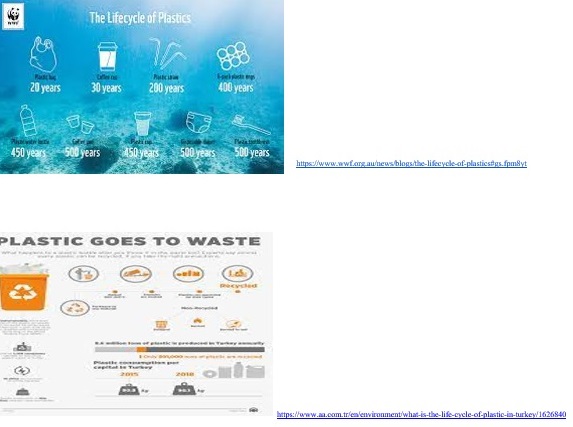
Not all packaging ends up in landfills. Packaging waste that is not properly disposed of can end up in the environment. The number one place that packaging waste ends up if not properly disposed of is in the ocean. Eight million metric tons of trash are dumped into the ocean every year. This type of pollution is known as marine trash, which is disposed of or abandoned on beaches, in waterways that lead to the ocean, or in the ocean itself. Marine trash includes trash, plastic, paper, wood, metal, and other manufactured materials. About 60% to 80% of all marine trash is composed of plastic. This is extremely dangerous for the animals that live in the ocean or have contact with the ocean. Seabirds, turtles, and other animals such as fish or marine mammals confuse floating trash for food. If the trash is ingested, it can choke them or block their digestive system. Other things can also lead to strangulation or prevent them from swimming or diving, something that is necessary for their survival. In 2011, more than 260 species were known to have died from eating or being choked by plastic debris. Small plastic trash can pose the threat of toxic chemicals being released into the oceans. This is known as microplastic. These chemicals, such as DDT and PCBs, can cause cancer and weakens the immune system making the animals more likely to get sick and putting them at further risk. These toxic chemicals also put humans at risk. Since a lot of marine animals are consumed by humans, the toxins can be absorbed and transferred. Like animals, these chemicals can be extremely dangerous for people’s health.
Packaging companies should be taking a stride towards a more sustainable market. Some companies have already started that initiative. In 2019, multinational food company, Tetra Park, began to work with environmentally sound packaging solutions. The company focuses on only using bioplastics derived from sugar cane instead of fossil fuels and lounged its Tetra Classic Aseptic 65ml Cube packaging solution, which is an innovative design that is made to take up less space, optimize distribution and storage, and requires less secondary packaging. Eco-Products, an American food service packaging products company makes its products from renewable and recycled resources. It centers on producing items including hot and cold cups, paper food, and other one-time use items that are usually the first ones to be thrown away. The first frozen brand in Europe that was awarded the plastic-free trust mark by an environmental campaign group, A Plastic Planet, makes its plant-based packaging 100% compostable to avoid the release of harmful gasses into the environment. Lastly, some plastic bottling companies have turned from plastic to aluminium like CanO Water. In terms of their sustainability, aluminium cans are infinitely recyclable.
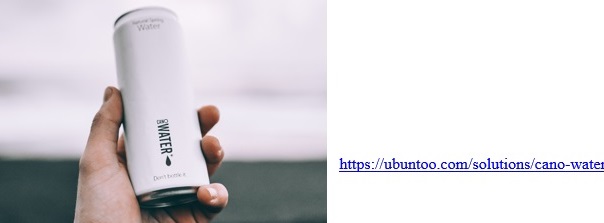
All companies should continue or begin to turn towards green packaging. There are many reasons as to why companies should make this shift. According to the World Economic Forum, consumers are willing to pay more for goods and services from sustainable companies. The 100 most sustainable companies in the US, as they were named in the magazine Barron's, had a price growth of 29% in 2017, compared to 22% for the S&P 500 Index. The 2018 Global Sustainability Index Institute Report investigated the 400 world’s largest business goal statements and found that sustainability goals have doubled. They all listed that this was because companies' performance benefited, and the stakeholders have shown interest in sustainability. Overall, sustainable packaging shows corporate responsibility. This means that a business is committing to bettering the environment and society.
Green packaging also has its financial benefits. With the decrease of carbon footprint, the lower the shipping costs get. Many of today's brands are concerned with the number of greenhouse gasses that are being produced and are contributing to global warming. Some companies have shown that as they move towards green packaging the materials that are used are extremely thin, but strong, which decreases packaging matters and maintains protection. Since the packaging is thinner, it weighs less, which lowers the shipping costs. Other companies have also shown that when using sustainable packaging that is designed to minimize inefficiency that contributes to environmental harm, they can save millions. A great example of this is IKEA who while adjusting packaging for one of its products by 50% resulted in savings of 1.2 million Euros per year.
In summary, waste that comes from packaging is extremely harmful to our environment and packaging companies should develop strategies to move towards green packaging. Everything about packaging has been shown to have harmful effects, from the making and the using of the raw materials to the way that it is disposed of. Many companies have already made the effort to turn towards a green and stable future. Green packaging has been shown to have not only environmental, health, and societal benefits, but also financial benefits for businesses. Packaging companies should take the chance at aiming towards greener goals for the future of a better world.





























